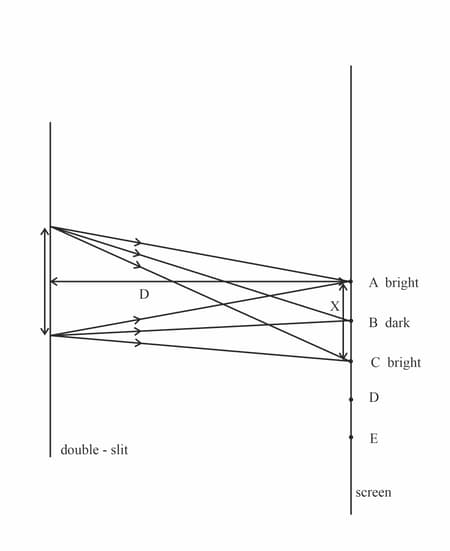Consider points and on the screen in Figure, where . State and explain what you would expect to observe at and .

The type of interference, and hence whether a bright or a dark fringe is seen on the screen, depends on the path difference between the rays of light arriving at the screen from the double-slit.


Important Questions on Superposition of Waves
In a double-slit experiment using light from a helium– neon laser, a student obtained the following results:
Width of Fringes Separation of slits Slit-to-screen distance Determine the wavelength of the light. And
If The student moved the screen to a distance of From the slits. Determine the fringe separation Now.
Use the equation to explain the following observations:
(a) With the slits closer together, the fringes are further apart.
Use the equation to explain the following observations:
(b) Interference fringes for blue light are closer together than for red light.
Use the equation to explain the following observations:
(c) In an experiment to measure the wavelength of light, it is desirable to have the screen as far from the slits as possible.
Monochromatic light is incident normally on a diffraction grating having lines per centimetre. The angular separation of the zeroth- and first-order maxima is found to be . If , calculate the angle for the second-order maximum.
